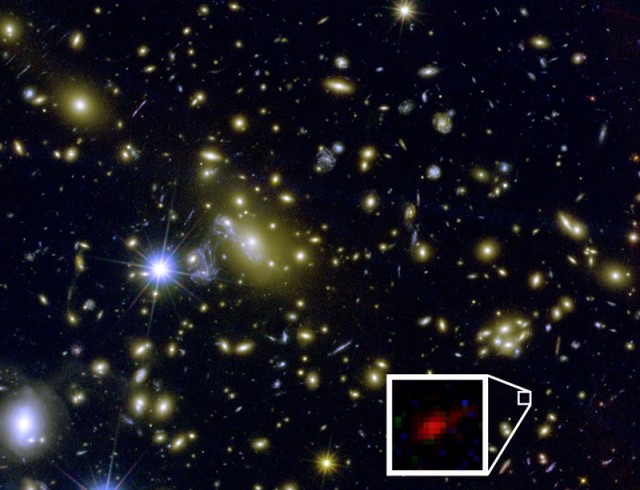
The inset shows light from a possible galaxy, emitted 490 million years after the Big Bang. The galaxy's light was magnified by the galaxy cluster that dominates the image.
The CLASH team/Space Telescope Science Institute
The first galaxies in the Universe formed very early in cosmic terms: less than 500 million years after the Big Bang. Observing the first stars and galaxies is not easy: even though they may be intrinsically bright, they are so distant that very few of their photons reach our telescopes.
In some instances, however, the light from such an early galaxy may be magnified if it passes near a galaxy cluster, due to a phenomenon known as gravitational lensing. Astronomers Wei Zheng and colleagues using the Hubble and Spitzer Space Telescopes discovered a possible galaxy dating to between 475 and 505 million years after the Big Bang—meaning its formation happened even earlier. Since they found a galaxy after a relatively short search over a fairly small patch of the sky, the researchers estimate the early Universe may have been full of similar galaxies, enough to drive a key event in the early Universe called reionization.
The astronomers observed 12 galaxy clusters in a small region of the sky. Galaxy clusters are the most massive objects in the Universe bound together by gravity, so they are capable of being powerful gravitational lenses—distorting space in a way that magnifies the light from still more distant objects. The researchers found an object in the region of the galaxy cluster MACS J1149+2223 that appeared to correspond to a magnified galaxy.
Read 7 remaining paragraphs | Comments
DIGITAL JUICE
No comments:
Post a Comment
Thank's!